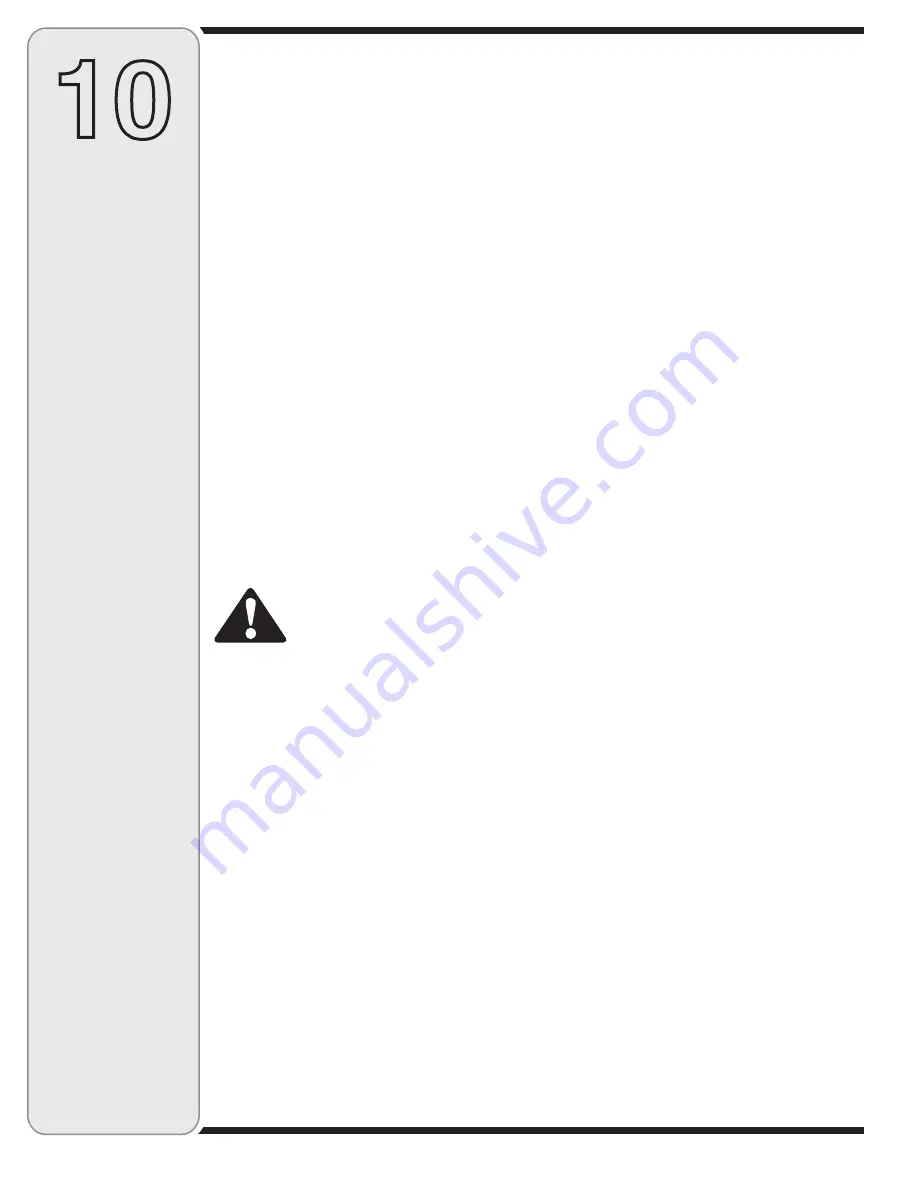
Storage
Engines stored over 30 days need to be drained of fuel
to prevent deterioration and gum from forming in fuel
system or on essential carburetor parts. If the gasoline in
your engine deteriorates during storage, you may need to
have the carburetor, and other fuel system components,
serviced or replaced.
1. Remove all fuel from tank by running engine until it
stops from lack of fuel.
2. Change oil. See Oil Change section.
3. Remove spark plug and pour about 1/2 an ounce of
engine oil into cylinder. Replace spark plug and crank
slowly to distribute oil.
4. Clean debris from around engine, under finger guard,
and under, around and behind muffler. Touch up any
damaged paint, and coat other areas that may rust with
a light film of oil.
5. Store in a clean, dry and well ventilated area away from
any appliance that operates with a flame or pilot light,
such as a furnace, water heater, or clothes dryer. Also
avoid any area with a spark producing electric motor,
or where power tools are operated.
6. If possible, also avoid storage areas with high humidity,
because that promotes rust and corrosion.
7. Keep the engine level in storage. Tilting can cause fuel
or oil leakage.
Removing From Storage
1. Check your engine as described in the Pre-Operation
Check section of this manual.
2. If the fuel was drained during storage preparation, fill
the tank with fresh gasoline. If you keep a container
of gasoline for refueling, make certain it contains only
fresh fuel. Gasoline oxidizes and deteriorates over
time, causing hard starting.
3. If the cylinder was coated with oil during storage
preparation, the engine will smoke briefly at startup.
This is normal.
10
Maintaining
Your
Engine
4. Check that the spark plug washer is in good condi-
tion and thread the spark plug in by hand to prevent
cross-threading.
5. After the spark plug is seated, tighten with a spark
plug wrench to compress the washer.
NOTE
: When installing a new spark plug, tighten 1/2
turn after the spark plug seats to compress the washer.
When reinstalling a used spark plug, tighten 1/8-1/4 turn
after the spark plug seats to compress the washer.
IMPORTANT
: The spark plug must be securely tight-
ened. An improperly tightened spark plug can become
very hot and may damage the engine.
Clean Engine
If the engine has been running, allow it to cool for at
least half an hour before cleaning. Periodically remove
dirt build-up from engine. Clean finger guard and around
muffler. Clean with a brush or compressed air.
IMPORTANT
: Do not spray engine with water to clean
because water could contaminate fuel. Using a garden
hose or pressure washing equipment can also force
water into the air cleaner or muffler opening. Water in
the air cleaner will soak the paper element, and water
that passes through the element or muffler can enter the
cylinder, causing damage.
WARNING: Accumulation of debris
around muffler could cause a fire.
Inspect and clean before every use.





































